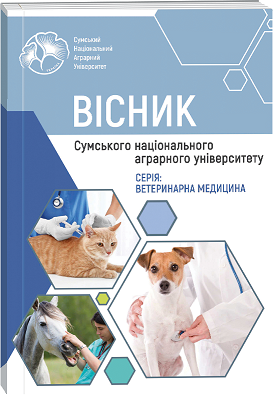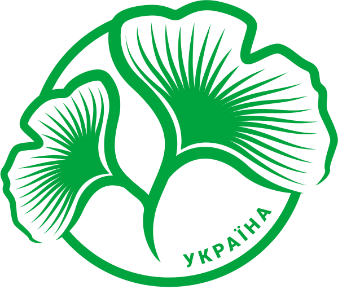MONITORING OF RESEARCH ON BOVINE SPONGIOFORM ENCEPHALOPATHY IN THE CONDITION OF THE VINNYTSIA REGIONAL STATE LABORATORY OF SSUFSCP
Abstract
Ukraine is included in the third category of countries that have an official status according to the BSЕ – a country with an uncertain risk. This is the main reason for the impossibility of exporting red meat to EU countries. The state is working on obtaining the status of a country with a controlled risk for BSЕ, which will allow Ukraine to trade ruminants of certain age categories and products obtained from them. The official components of obtaining the status are legislation and an annual risk assessment, which includes observation and monitoring. Post-mortem material (oblong brain) from cattle older than 24 months, obtained in 2021-2023, was used for research and frozen for storage. Monitoring studies of cattle older than 36 months on GE in the case of slaughter under normal conditions requires receiving at least 300,000 points in 7 years – respectively for a country with an uncertain status regarding GE, namely Ukraine. Livestock arrived for slaughter in Vinnytsia from various regions of Ukraine for three years and were examined in the conditions of the Vinnytsia Regional State Laboratory of the SSUFSCP. Prion tests approved by the European Union and recommended by the International Epizootic Bureau are used for monitoring studies as quick methods for identifying patients with BSЕ. A study was conducted on BSE in the case of slaughter under normal conditions in the Vinnytsia Regional State Laboratory of SSUFSCP for the past three years of samples of material from 22562 animals, as a result 3104 points were obtained, of which the largest number was from animals of the Vinnytsia region 1147 points (37%), slightly less 745 points (24%) from animals of the Cherkasy region, 512 points (17%) from other regions except Kyiv, Khmelnytskyi and Zhytomyr regions.
References
2. Alberti, S., Halfmann, R., King, O., Kapila, A., Lindquist, S. (2009) A systematic survey identifies prions and illuminates sequence features of prionogenic proteins. Cell, 137(1).
3. Barria, M.A., Ironside, J.W., Head, M.W. (2014). Exploring the zoonotic potential of animal prion diseases: in vivo and in vitro approaches. Prion, 8(1).
4. Baron, T., Vulin, J., Biacabe, A.G., Lakhdar, L., Verchere, J., Torres, J.M., Bencsik, A. (2011). Emergence of classical BSE strain properties during serial passages of H-BSE in wild-type mice. PloS one, 6(1).
5. Bruce, M.E., Will, R.G., Ironside, J.W., McConnell, I., Drummond, D., Suttie, A., Bostock, C.J. (1997). Transmissions to mice indicate that 'new variant' CJD is caused by the BSE agent. Nature, 389(6650).
6. Casalone, C., Zanusso, G., Acutis, P., Ferrari, S., Capucci, L., Tagliavini, F., Monaco, S., Caramelli, M. (2004). Identification of a second bovine amyloidotic spongiform encephalopathy: molecular similarities with sporadic Creutzfeldt-Jakob disease. Proceedings of the National Academy of Sciences of the United States of America, 101(9).
7. Corona, C., Vallino Costassa, E., Iulini, B., Caramelli, M., Bozzetta, E., Mazza, M., Desiato, R., Ru, G., & Casalone, C. (2017). Phenotypical Variability in Bovine Spongiform Encephalopathy: Epidemiology, Pathogenesis, and Diagnosis of Classical and Atypical Forms. Progress in molecular biology and translational science.
8. Diack, A.B., Head, M.W., McCutcheon, S., Boyle, A., Knight, R., Ironside, J.W., Manson, J.C., Will, R.G. (2014). Variant CJD. 18 years of research and surveillance. Prion, 8(4).
9. Hill, A.F., Desbruslais, M., Joiner, S., Sidle, K.C., Gowland, I., Collinge, J., Doey, L.J., Lantos, P. (1997) The same prion strain causes vCJD and BSE. Nature, 389(6650).
10. Ludlam, C.A., Turner, M.L. (2006). Managing the risk of transmission of variant Creutzfeldt Jakob disease by blood products. British journal of haematology, 132(1).
11. Gill, O.N., Spencer, Y., Richard-Loendt, A., Kelly, C., Dabaghian, R., Boyes, L., … Brandner, S. (2013). Prevalent abnormal prion protein in human appendixes after bovine spongiform encephalopathy epizootic: large scale survey. BMJ (Clinical research ed.), 347.
12. Piccardo, P., Cervenak, J., Yakovleva, O., Gregori, L., Pomeroy, K., Cook, A., Asher, D. M. (2012). Squirrel monkeys (Saimiri sciureus) infected with the agent of bovine spongiform encephalopathy develop tau pathology. Journal of comparative pathology, 147(1).
13. Korniienko, L. Ye. (2022). Prionni khvoroby tvaryn i liudyny: naukova monohrafiia [Prion diseases of animals and humans: scientific monograph]. Kyiv: TOV «Iurka Liubchenka» [in Ukrainian].
14. Seuberlich, T. (2014). Overview of bovine encephalopathy. Kahn CM, Line S, Aiello SE, editors. The Merck veterinary manual [online]. Whitehouse Station, NJ: Merck and Co; Bovine spongiform encephalopathy.
15. Verbytskyi, P.I. (2005) Hubchastopodibna entsefalopatiia velykoi rohatoi khudoby ta inshi prionni infektsii: monohrafiia [Bovine spongiform encephalopathy and other prion infections: monograph]. Kyev: Vetinform [in Ukrainian].
16. Wells, G.A.H., Wilesmith, J.W. (2004). Bovine spongiform encephalopathy and related diseases. In: Prion Biology and Diseases, ed. Prusiner.
17. World Organization for Animal Health. Number of cases of bovine spongiform encephalopathy (BSE) reported in the United Kingdom https://www.oie.int/en/animal- health-in- the-world/bse- specific-data/numberof- cases- in-the- unitedkingdom/ (2020).

 ISSN
ISSN  ISSN
ISSN 



